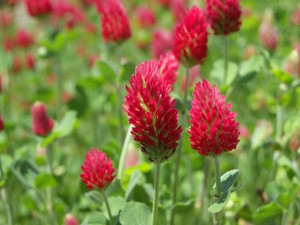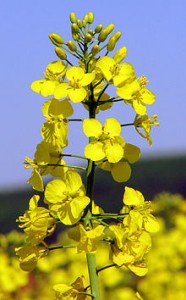Improve Your Garden Soil With Cover Crops
go.ncsu.edu/readext?169331
en Español / em Português
El inglés es el idioma de control de esta página. En la medida en que haya algún conflicto entre la traducción al inglés y la traducción, el inglés prevalece.
Al hacer clic en el enlace de traducción se activa un servicio de traducción gratuito para convertir la página al español. Al igual que con cualquier traducción por Internet, la conversión no es sensible al contexto y puede que no traduzca el texto en su significado original. NC State Extension no garantiza la exactitud del texto traducido. Por favor, tenga en cuenta que algunas aplicaciones y/o servicios pueden no funcionar como se espera cuando se traducen.
Português
Inglês é o idioma de controle desta página. Na medida que haja algum conflito entre o texto original em Inglês e a tradução, o Inglês prevalece.
Ao clicar no link de tradução, um serviço gratuito de tradução será ativado para converter a página para o Português. Como em qualquer tradução pela internet, a conversão não é sensivel ao contexto e pode não ocorrer a tradução para o significado orginal. O serviço de Extensão da Carolina do Norte (NC State Extension) não garante a exatidão do texto traduzido. Por favor, observe que algumas funções ou serviços podem não funcionar como esperado após a tradução.
English
English is the controlling language of this page. To the extent there is any conflict between the English text and the translation, English controls.
Clicking on the translation link activates a free translation service to convert the page to Spanish. As with any Internet translation, the conversion is not context-sensitive and may not translate the text to its original meaning. NC State Extension does not guarantee the accuracy of the translated text. Please note that some applications and/or services may not function as expected when translated.
Collapse ▲If you have empty space in your garden that will remain bare through the winter consider planting a cover crop such as crimson clover, rapeseed, or rye. Cover crops provide many benefits, including weed and disease suppression, improving soil condition, and adding nutrients to the soil. Early fall is prime time to plant winter cover crops.
Cover Crops Versus Green Manures
Cover crops are seeded directly into empty garden areas and allowed to grow for several weeks or even months. Cover crops that are tilled into the soil while still green and living are called green manures. Tilling crops into the soil adds nutrients to the soil and increases organic matter, and is much like growing compost directly in the garden.
Some cover crops are simply mown down and left on the soil surface at the end of the season. The residue left by these crops acts as a mulch, holding moisture in the soil and suppressing weed growth. Several varieties of legumes, grains, and mustard relatives can be grown as cover crops or green manures. Each has its benefits. Which crop is best for your garden depends on what you most hope to accomplish by planting it.
Legumes
Members of the pea and clover family are known as legumes. These plants are able to capture nitrogen from the air and make it available to plants, providing a natural source of fertilizer. They are able to do this thanks to a beneficial relationship they have developed with a type of soil dwelling bacteria. Legumes that are infected with these beneficial bacteria will have pinkish colored bumps and knots on their roots.
The main benefit of growing a type of legume as a cover crop is they increase nitrogen levels in the soil. This means you will not need to add as much fertilizer to crops planted in beds where a legume has grown, which can be particularly helpful in sandy soils. Types of legumes commonly grown as winter cover crops include crimson clover, Austrian winter pea, and hairy vetch.
For best results, sow legume cover crops by mid October. If you are planting these crops in beds where beans or peas have not grown recently, you may get better results if you inoculate the seed first. Legume inoculants can be purchased from some garden center or online. Inoculants contain the beneficial bacteria that help legumes fix nitrogen.
Plan to till these crops into the soil in early spring, just as soon as they begin to flower. You can either till the crop directly into the soil or mow it first and then till it in. Either way you will get the greatest increase in nitrogen by mixing these crops into the soil rather than simply mowing them and leaving them on the surface.
Grains and Grasses
Grains and grasses that are grown as cover crops include annual ryegrass, cereal rye, wheat, oats, and barley. They can be planted a little later than legumes, from October through mid November. Grains and grasses are the best cover crop choice for weed suppression, especially when they are mown and left on the soil surface rather than tilled into the soil. These cover crops are often seeded mixed with legumes like crimson clover and hairy vetch at a rate of 3 parts grain to 2 parts legume (for example: 0.75 lbs cereal rye and 0.5 lbs crimson clover per 1000 ft2).
Mustard and Rapeseed
Certain mustard varieties and its relative, rapeseed, can reduce soil diseases
when they are tilled into the soil as a green manure. They are particularly effective at reducing root knot nematodes, a destructive pest of many summer vegetables. While technically a type of microscopic worm, nematodes are considered a plant disease. Vegetables that are susceptible to nematode infection include cucumbers, tomatoes, eggplants, okra, and cantaloupes.
Plants infected with root knot nematodes will be stunted, wilt frequently, and produce little to no harvest. When you pull these plants up, you will notice their roots are knotted and bumpy, but these bumps are not caused by a beneficial bacteria like those on legume roots. Instead they are infected by a destructive parasite.
There is no way to kill root knot nematodes in vegetable gardens. Instead gardeners must suppress them by planting resistant varieties and through practices such as incorporating nematode suppressive cover crops. These include ‘Dwarf Essex’ rapeseed, ‘Pacific Gold’ mustard, and oilseed radish, which should be planted in October and tilled into the soil two to three months later. Other winter cover crops that help suppress nematodes include hairy vetch and cereal rye, but all of these crops must be tilled into the soil to reduce nematode levels.
If your local garden center does not have seed for these crops in stock, try ordering online. Johnny’s Seed is one possible source for many of these crops: http://www.johnnyseeds.com/c-280-green-manures.aspx
Learn More
Find out more about cover crops on the Growing Small Farms website, https://www.ces.ncsu.edu/chatham/ag/SustAg/covcropindex.html.
If you have questions about cover crops contact your local Extension office:
- If you live in Pender County, call 259-1235.
- In New Hanover County, call 798-7660.
- In Brunswick County call 253-2610
- Or visit https://www.ces.ncsu.edu/ to find your county office





